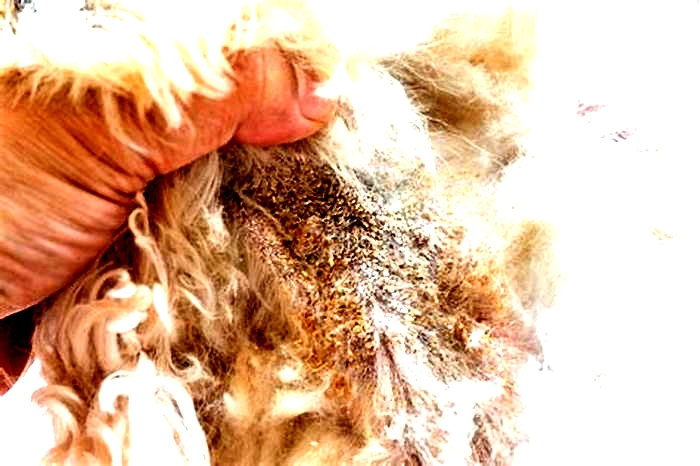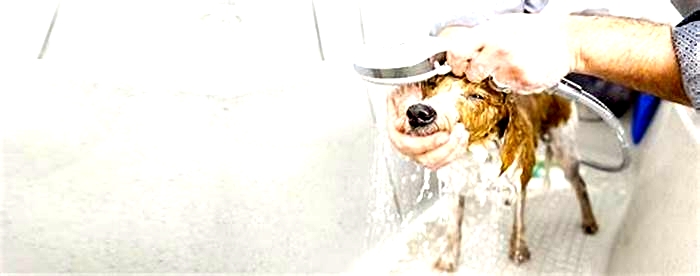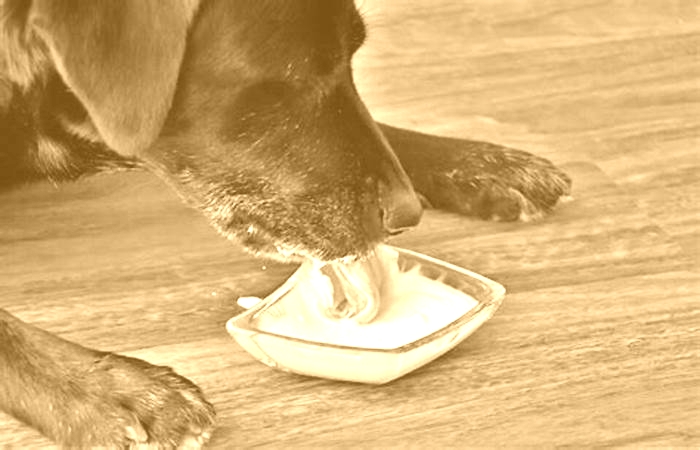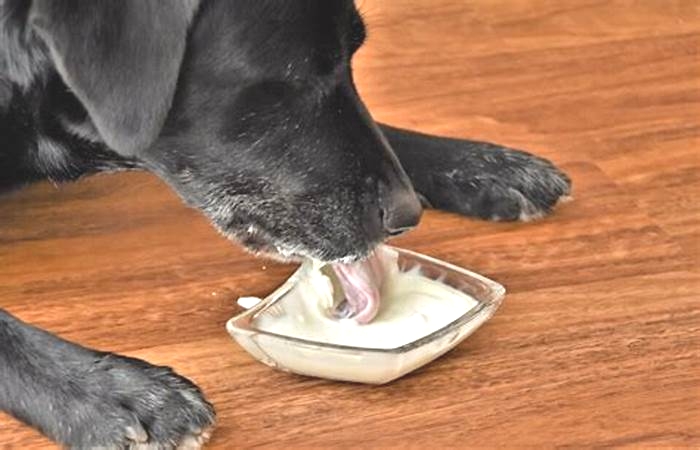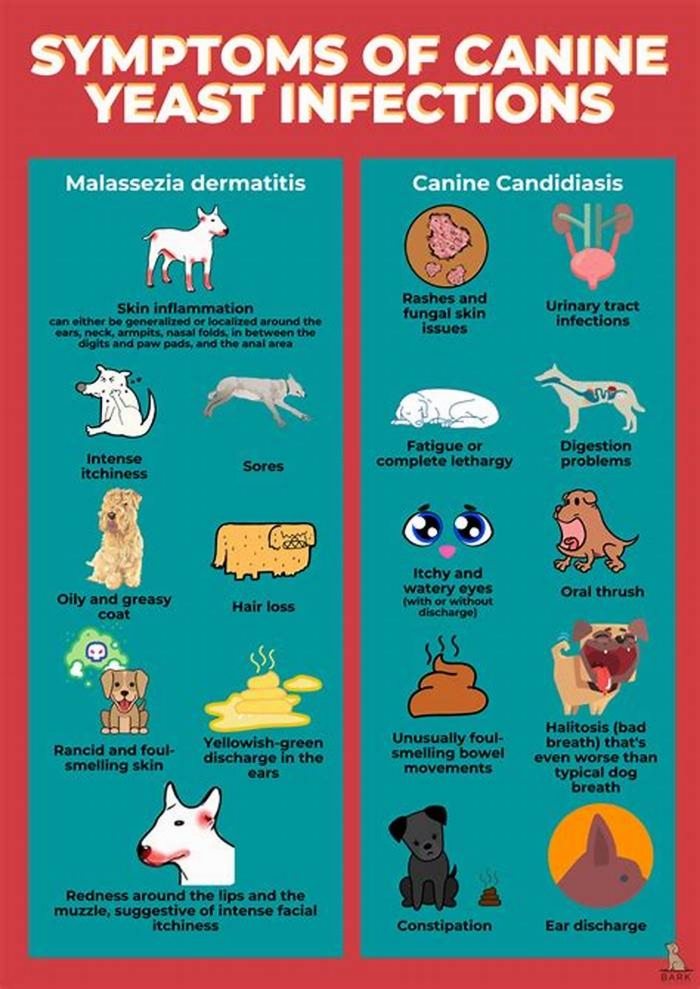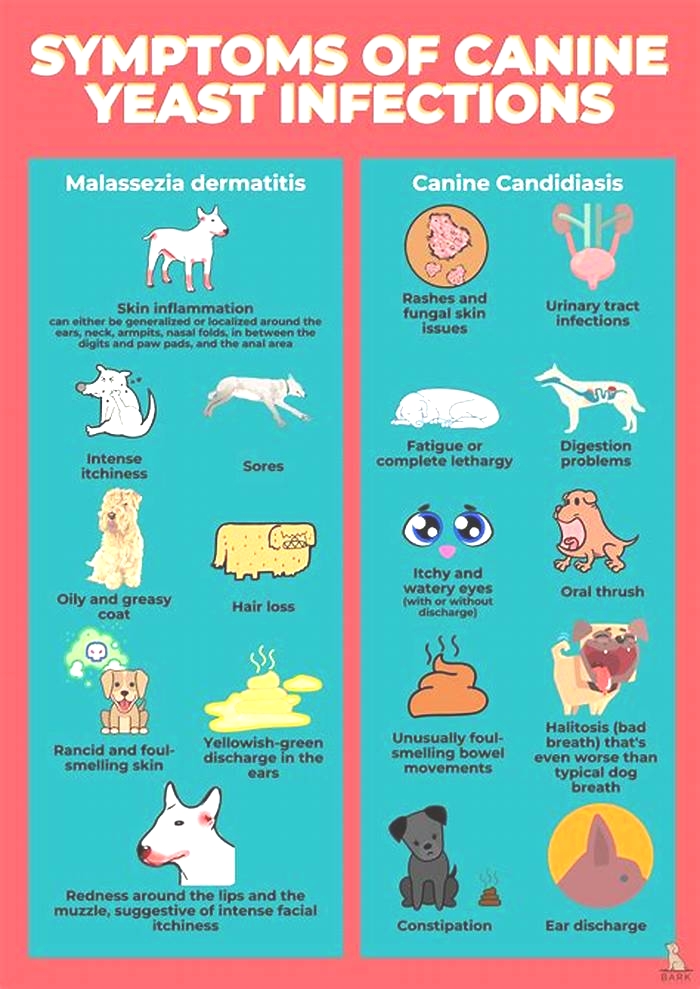How do I know if my dog has a yeast infection in his paw
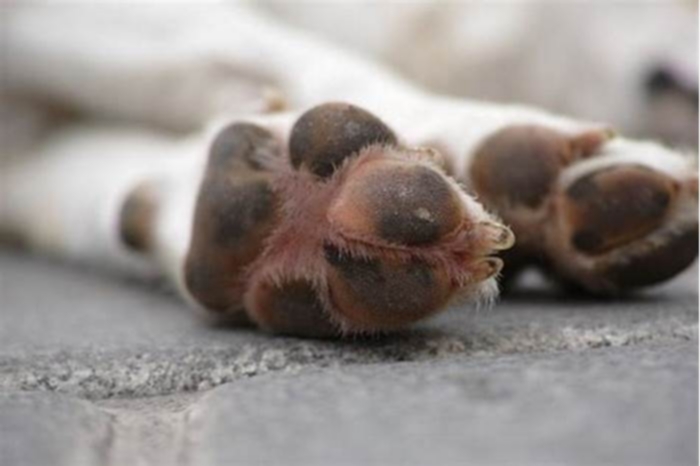
Yeast Infections in Dogs: What to Know
Yeast infections in dogs are common, especially in certain breeds or dogs with underlying conditions and compromised immune systems. While they can occur anywhere on the skin, they are often seen in your dogs ears. Early diagnosis and treatment are key to preventing serious complications. Heres what to know about yeast infections in dogs to keep your dog healthy.
What Causes a Yeast Infection in Dogs?
Yeast is a live, single-celled microorganism classified as a member of the fungus kingdom. Its normally found on every dogs skin, but in small amounts. A yeast infection occurs when a substantial amount of yeast excessively builds up in one area.
Yeast infections often occur if there is an underlying medical condition, such as food sensitivities, environmental factors, or parasites, such as fleas, which can cause allergies, as well as the dermatological condition seborrhea. Bacterial infections or underlying hormonal problems may also throw the skins defenses off-balance. In the case of yeast infections of the ear, the most common causes are water or debris trapped in the ear or food sensitivities. Yeast infections of the ear could also be caused by underlying mechanical issues such as damage to the eardrum, a polyp, or even a mass or tumor in the ear canal.
Are Some Breeds More Susceptible to Yeast Infections?
Certain dog breeds are thought to be genetically predisposed to developing yeast infections. These breeds include the West Highland White Terrier, Basset Hound, Cocker Spaniel, Silky Terrier, Australian Terrier, Maltese, Chihuahua, Poodle, Shetland Sheepdog, Lhasa Apso, and Dachshund.
Dogs with floppy ears who swim often, such as Golden Retrievers and Labrador Retrievers, are more likely to get yeast infections. Breeds such as Miniature Schnauzers, Bichon Frise, and Shih Tzu are also more susceptible to infections because the thick hair in their ear canals hampers the airflow necessary to keep ears dry.
Any dog with allergies is also more likely to develop yeast infections.
Types of Yeast Infections in Dogs and How to Recognize Them
Yeast Infections in Ears
The ear canal of a dog is L-shaped, dropping down and toward the head. This dark, warm, moist environment is the perfect setting for a yeast infection to thrive. The two types of yeast most often found in a dogs ears are Candida and Malassezia.
Yeast infections can occur in any part of the dogs ear. A dog with a yeast infection in their ear may exhibit these symptoms:
- Scratching and digging at the ear
- Rubbing the head on the floor, walls, or furniture
- Excessive shaking of the head
- Musty odor
- Brown, yellow, or bloody discharge
- Crusted skin or fur on the ear flap
- Swelling and redness
- Hair loss around the base of the ear
Early diagnosis and treatment of a yeast infection in the ears are critical before it spreads deeper. If a yeast infection spreads deeper into the ear, it can cause serious pain and complications, such as loss of hearing, vestibular imbalance, or neurological damage.
Yeast Infections on Paws
A dogs paws are susceptible to yeast infections because they encounter wet, dirty ground, which means moisture and dirt are likely to be trapped between the toes and pads. Contact with grass and weeds can also trigger allergies or result in cuts and scratches. Dogs are likely to lick their irritated paws, which doesnt help, instead adding even more moisture.
If your dog has a yeast infection on the paws, you may see the following symptoms:
Excessive licking and chewing of the feet
- Redness and irritated skin
- Brown discharge in nailbeds
- Pink salivary staining on the hair around the paws
- Hair loss
There could be many reasons a dog excessively licks their paws, including anxiety, boredom, injury, parasites, bacteria, or allergies, including food sensitivities. Early examination, diagnosis, and appropriate treatment by a veterinarian can relieve discomfort and prevent complications. This is made using a combination of their medical history and diagnostic swabs of the debris or accompanying cells.
Yeast Infections on Skin
Yeast dermatitis, a skin inflammation caused by yeast infections, can spread to any area of a dogs skin. But its most likely to occur at the site of a rash or wherever there are skin folds that can trap moisture. Wrinkly breeds, such as the Chinese Shar-Pei, are especially vulnerable.
Symptoms of yeast infections of the skin include:
- Intense itching
- Red, irritated, inflamed skin
- Greasy, crusty, or flaky patches
- Thickening (elephant-like) skin
- Darker skin color
- Hair loss
- Musty smell
Although a yeast infection of the skin may start in a very specific area, if left untreated, it can spread and affect the entire body, including the dogs face and mouth. Often, there may be a secondary bacterial infection accompanying the yeast infection.
How to Treat Yeast Infections in Dogs
Depending on how deep in the ear canal a yeast infection is, the treatment will vary. The veterinarian will prescribe a topical antifungal cream for an infection in the outer ear. An infection of the middle ear may require antifungal drops or oral medication. The vet is likely to recommend a thorough cleaning of the ear and possibly ongoing treatment with ear-drying solutions.
Yeast infections on the paws may require treatment with a disinfectant spray to kill germs, as well as daily application of a topical antifungal lotion or spray. It may also be necessary to use an Elizabethan collar to keep the dog from licking the paws so they can stay dry while they heal.
Skin infections may require topical and oral treatment. Cleansing shampoos may clean up the greasy skin. Your vet may recommend using a medicated, antifungal shampoo and leaving it on the dogs skin for about 10 minutes. Bathing may need to be repeated for up to 12 weeks. The veterinarian will also prescribe an antifungal medication, as well as an antibiotic, to treat any bacterial skin infection that may occur along with yeast dermatitis.
How to Prevent Yeast Infections in Dogs
The good news is that yeast infections in dogs are not contagious to other dogs or humans. The most important thing to remember to prevent yeast infections is to keep the area clean and dry.
Too much moisture is a common cause of ear infections, so thoroughly drying your dogs ears after swimming and bathing can prevent moisture build-up. If your dog has a skin rash, musty smell, or is scratching or licking excessively, taking them to the veterinarian can prevent an infection from spreading and becoming more serious.
The prognosis for yeast infections is good when you follow the treatments your veterinarian gives you. Its important to understand that unless an underlying problem such as allergies, hypothyroidism, or seborrhea is controlled, a yeast infection is likely to come back.
Pododermatitis in Dogs: What to Know
Occasional paw licking is normal grooming behavior in dogs. However, when the licking is extreme and persistent, its usually a sign theres an underlying problem. If your dogs paws also look red or inflamed, they could have pododermatitis.
The key to getting pododermatitis in dogs under control is prompt diagnosis and treatment of the underlying cause. Otherwise, it can lead to debilitating chronic flare-ups and infections.
What is Pododermatitis in Dogs?
Dr. Millie Rosales is a board-certified veterinary dermatologist. She explains that pododermatitis is a broad medical term for inflammation of the skin of the paw. The inflammation can affect one or multiple paws and can cover a part or the whole of the paw. It can be the paw, the digits, around the nail, or the pads, Dr. Rosales says.
What Causes Pododermatitis in Dogs?
One of the biggest challenges of pododermatitis is that it can be multifactorial. Theres always a primary underlying cause for pododermatitis. But other factors can also influence the inflammation.
Primary Causes of Pododermatitis in Dogs
Its important to understand that there are many causes of pododermatitis, Dr. Rosales says.
Sometimes, the primary cause is obvious. In other cases, its more subtle and requires careful diagnostic work. Some dogs can also have more than one primary cause, making it trickier to get pododermatitis under control. Its also important to determine if only one or multiple of a dogs paws are affected.
Dr. Rosales explains that a common cause for paw inflammation isallergies,whether thats to food or atopy, which is an allergen in the environment like pollen from trees, grass, weeds, etc). Those allergies will cause the dog to have very itchy feet, and the chewing and licking leads to trauma and often infection, she says.
Some other causes of pododermatitis in dogs include:
Mange
Autoimmune disorders, such as pemphigus foliaceous or pemphigus vulgaris
Hormonal disorders, such as hypothyroidism or Cushings disease
Metabolic disorders, such as hepatic cutaneous syndrome
Nutritional disorders, such as zinc deficiencies
Fungal infections, such as ringworm
Parasites, such as hookworms
Foreign bodies, such as foxtail grass seed heads, splinters, or glass. This is only a common cause when one paw is affected.
Behavioral issues, such as compulsive disorders or anxiety
Leishmania
Cancer
Secondary Factors
Dr. Rosales explains that the first time a veterinarian will see a dog relating to pododermatitis is often when a secondary bacterial or fungal yeast infection occurs. The altered microenvironment of the skin, along with the dogs desire to chew and lick their inflamed paws, mean infections are common.
Infection can affect one or multiple paws. Sometimes, different types of infection affect different paws, and the infection can be superficial or deep.
Predisposing Factors
Predisposing factors promote the risk of a dog developing pododermatitis. Dr. Rosales explains that certain breeds, such as Bulldogs, Mastiffs, and other bully breeds, are more prone to allergies or obesity that can contribute to paw inflammation, but their overall conformation is also problematic.
They might have webbed paws or thickened pads and bear weight differently. Interdigital cysts and interdigital furunculosis (lesions or lumps) are common problems that can lead to deep and chronic infections. These cases are really challenging to manage because we cant change how these dogs are genetically built, Dr. Rosales says.
Any dog with altered weight-bearing is more likely to have paw inflammation. This includes large breeds, obese dogs, and those with arthritis or orthopedic problems.
Perpetuating Factors
Perpetuating factors exacerbate and maintain pododermatitis symptoms, worsening the inflammation and secondary problems. This might include scarring, lesions, ingrown hairs, changes in pad formation and how the dog bears weight, and chronic infections. These perpetuating factors can sometimes result in more serious ongoing problems and discomfort for the dog than the primary cause of pododermatitis. Speedy diagnosis and treatment of the primary and secondary causes can help minimize problematic perpetuating factors from causing long-term complications.
Signs of Pododermatitis in Dogs
Dr. Rosales explains that the most common sign to watch out for in a dog with pododermatitis is licking and chewing the paws, as this suggests itchiness and discomfort. The paws may also be red. A dog owner may not think to separate and look between the toes for signs of inflammation, she says. Then it can get worse from there, where the dog has bleeding, ulcerated, crusty, cracking, swollen paws, and it hurts to walk.
Other possible signs include:
If your dog starts licking or chewing their paws a lot, dont delay seeking advice from a veterinarian. Waiting can result in difficult-to-treat infections and other perpetuating factors.
How is Pododermatitis in Dogs Diagnosed?
Establishing the underlying cause of pododermatitis requires a methodical approach. This typically involves your veterinarian taking a detailed medical history, conducting a thorough physical exam, and running diagnostic tests. Dr. Rosales wants to know when the owner first noticed the problem, whether it started in one paw or all four, and if its symmetrical. Your veterinarian might also ask about other pets in the household, where your dog exercises, their diet, and if theyre on any medication.
The history and physical exam help your veterinarian decide which route to go down regarding testing. If the dog is 10 years old and has never had a foot problem and now has these crusty, awful feet, I wouldnt be too worried about allergies, Dr. Rosales says. In these instances, an autoimmune or hormonal disorder is more likely.
Dr. Rosales explains that testing can be multifaceted, but typically involves taking skin samples. This might include hair plucking, scrapings, or fine needle aspirations. These samples help detect infections, cancer, and other primary and secondary causes. Sometimes, I have to take a biopsy of different areas on the foot so that it can give me an idea of whats going on, Dr. Rosales says. If the pododermatitis affects more than one paw, samples may need to be taken from each to establish if they have different infections.
Blood work and endocrine analysis to detect hormonal or autoimmune disorders or X-rays to detect foreign bodies might be on the diagnostic list. If your veterinarian suspects allergies, they may suggest a food trial or allergy testing.
How to Treat Pododermatitis in Dogs
Treatment for pododermatitis is usually twopronged. Your veterinarian will deal with any secondary infection and establish a treatment plan for the primary cause.
Treating Secondary Causes
Theres a high likelihood your dog will get a secondary bacterial or yeast infection, Dr. Rosales says. Its important to treat that because this causes a lot of the itchiness, inflammation, and pain the pet is feeling. Immediately treating any infection removes the risk of it worsening and can offer comfort to your dog while working on a treatment plan for the primary cause of the pododermatitis.
Typically, treating any secondary infection involves administering antibiotics and sometimes antifungal medication.
Treating Primary Causes
Because there are so many primary causes of pododermatitis, treatment options vary greatly depending on the diagnosis. It could involve individual or combination drug therapies, topical creams, pain management, anti-itch medications, lifestyle changes, special gear (such as boots when it relates to a confirmation issue), and possibly surgery for the removal of foreign bodies or cancer diagnoses. Some treatments will be temporary, and others might be lifelong.
For some food and contact hypersensitivities, avoiding ingestion or contact with the allergens is possible. If its a pollen allergy, then I need to put the pet on some allergy medicine to stop it from chewing and licking its paw, Dr. Rosales says. Antihistamines, oral antibiotics, and regular foot baths with special medicated shampoo can make a big difference in managing the symptoms and discomfort. Immunotherapy treatment and hyposensitization vaccines are other avenues your veterinarian might explore depending on the type and severity of the allergy.
Surgery may be considered as a last resort when the pododermatitis results in changes to the paw that cause ongoing discomfort. However, Dr. Rosales recommends alternative management strategies as the surgery is complex and often leads to postoperative complications and potential further conformational issues. Plus, the inflammation can still reoccur.
Pododermatitis in Dogs Prognosis
The prognosis really depends on the underlying cause, Dr. Rosales says. Fortunately, for the most common cause, she says the prognosis is pretty good because its possible to manage allergic diseases. A positive outcome is also typical for pododermatitis caused by things like foreign bodies, parasitic diseases, or nutritional disorders.
For some disorders and diseases, such as cancer, the prognosis isnt so good. Theres also a metabolic disorder called hepatic cutaneous syndrome, and thats a really bad disease that has a poor prognosis, Dr. Rosales says. When pododermatitis causes severe damage to the paws, this can result in recurrent problems that require lifelong care. The pododermatitis may also require continual management when it relates to conformational issues or serious autoimmune conditions.

